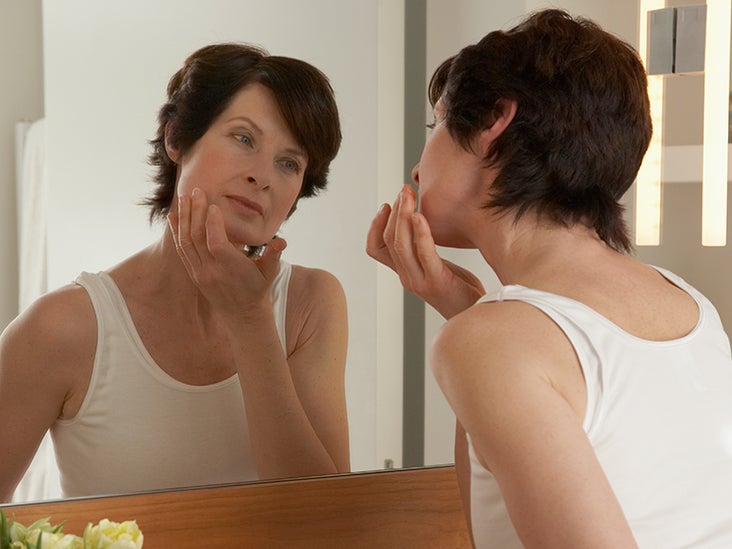Pimple on mole: Causes, treatments, and when to see a doctor - Medical News Today

Developing a pimple on a mole can cause concern. However, most of the time, a pimple on a mole is just the same as any regular pimple and should disappear within a week or so.
A mole is a collection of skin cells with a darker pigment than the rest of the skin. Most moles appear in early childhood or before 20 years of age, but others can appear in later life.
It is not unusual for a person to have between 10 and 40 moles.
Moles can be flat or raised and sometimes have hairs growing out of them. Pimples can form on any area of skin that has hair follicles.
In rare cases, changes to the appearance of a mole can have a more serious cause, and medical attention is advisable.
A pimple forms when the skin's natural oil, or sebum, and dead skin cells collect in a hair follicle.
Hair follicles are the tiny holes in the skin where hairs grow. They reach below the skin's surface, but we see them on the surface as pores.
People with oily skin are more prone to having pimples. Adolescents and young adults tend to have oilier skin, due to changes in hormones, so pimples occur more frequently. Hormonal changes in females during menstruation and menopause can also trigger pimple breakouts.
Wearing makeup or oily skincare products is another potential cause of the skin's pores becoming clogged. A person should choose the right products for their skin.
Pimples on moles that do not disappear after a few weeks may need to be checked by a doctor. In rare cases, melanoma or other skin cancers can cause changes to moles.
A pimple on a mole might feel raised and tender to touch. Pimples can form deep in the skin as nodules or cysts, or closer to the surface as whiteheads, blackheads, papules, or pustules.
A pimple on a mole might have a black or white top, or 'head,' but the darker color of the mole might make this difficult to see.
Advice for treating pimples on moles is the same as for any other pimple.
If a person only gets pimples occasionally, it is not necessary to try treatments that are meant for persistent pimples or acne.
Pimples will usually go away on their own after some time. Avoid touching or squeezing the pimple, and do not wash the skin too often. Drying out the skin can cause the skin to produce extra oil to compensate, which may increase the risk of pimples recurring.
For recurring pimples, treatment options include:
- Use a skin cleanser containing salicylic acid, which helps break down the oil and bacteria in the skin's pores. Try using it a few times a week, as any more than that might irritate the skin.
- Use pimple treatments containing benzoyl peroxide with caution, as they can inflame the skin. Doctors can prescribe stronger formulations than are available over the counter but only for severe cases of acne. Once the skin clears up, try switching to milder skincare products.
- Seek advice from a pharmacist or doctor who may suggest a topical
retinoid cream or ointment.
Learn about treating pimples with home remedies here.
Prevention
Before considering treatments, here are some ways to prevent pimples from forming in the first place or becoming worse:
- Cleanse the skin: Wash the skin daily with a mild cleanser. For facial skin, wash twice a day and follow with a moisturizer. Some products claiming to treat pimples or acne may use harsh ingredients that can irritate the skin and cause further breakouts. Choose products carefully.
- Choose noncomedogenic makeup: Look for 'noncomedogenic' on the label, which is less likely to sit heavily on the skin and clog pores.
- Take care when shaving: Use a sharp blade for a wet shave and follow up with a nonperfumed moisturizer. Using an electric razor may also reduce skin irritation.
- Regular exposure to sunlight: Regular exposure to sunlight can improve mood and skin health. However, on sunny days stay in the shade and use a high factor sunscreen for sensitive skin. Too much sun can make skin wrinkle and increase the likelihood of skin cancers.
- Avoid touching the pimple: Squeezing a pimple can damage the surrounding skin and risk infection. Bacteria from the hands can pass onto the skin.
Learn more about preventing pimples here.
If a person thinks they have a pimple on a mole, it will probably improve within a few weeks without treatment. However, it is important to stay alert for any changes to moles. Anyone with concerns about moles should ask a doctor to have a look.
According to the
- color changes
- the mole gets unevenly smaller or bigger (unlike normal moles in children, which get evenly bigger)
- changes in shape, texture, or height
- the skin on the surface becomes dry or scaly
- the mole becomes hard or feels lumpy
- it starts to itch
- it bleeds or oozes
If a person notices any of these factors, they should speak to a doctor.
Learn more about when a mole requires medical attention here.
Pimples are as likely to form on a mole as anywhere else on the skin. This is rarely a cause for concern.
Most pimples disappear within a few weeks if left untouched, and a person keeps a pimple clean. Treatments are the same as when treating a pimple elsewhere on the body,
If a person notices other changes to a mole or if a pimple does not improve, they should speak to a doctor for an assessment.

Comments
Post a Comment